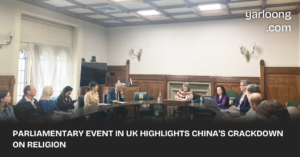
The year 2023 witnessed ongoing tensions between the United States and China, a situation that continued to simmer despite efforts to ease differences through high-level meetings and dialogues. According to ANI news, the relationship between the two global powers remains strained over various issues, including trade, Taiwan, and the Ukraine-Russia war, even after the meeting between US President Joe Biden and Chinese President Xi Jinping in November.
A key event that escalated tensions was the postponement of USSecretary of State Antony Blinken’s visit to Beijing in February. The visit was called off following the appearance of a suspected Chinese surveillance balloon over US territory. This incident led to the US military, on orders from President Biden and announced by USDefence Secretary Lloyd Austin, shooting down the balloon over the Atlantic Ocean, as reported by CNN.
China’s response to the downing of the balloon was one of “strong dissatisfaction and protest,” with the Chinese Foreign Ministry labeling the US action as an overreaction and a serious violation of international practices. They claimed the vessel was a civilian airship that accidentally entered USairspace.
This incident, among others, has significantly impacted diplomatic relations between the two countries. Following the balloon episode, China refused to hold talks with USDefence Secretary Lloyd Austin. The Pentagon’s request for a call between Austin and China‘s Minister of National Defence, Wei Fenghe, was rejected by China, further highlighting the communication gap between the two nations.
ALSO READ: India Declines to Share Himalayan Glacier Data with China, Citing Security Concerns
In response to these tensions, the Biden administration took a firm stand by imposing restrictions on sales of some US technology to several Chinese aviation and technology companies. This action was part of the US response to the Chinese spy balloon incident. The US Commerce Department added five Chinese companies and one research institute to its entity list, effectively stopping American firms from selling them parts and technologies without a special license.
The situation was further complicated by Taiwan President Tsai Ing-wen’s visit to New York City, which was sharply condemned by Beijing. China, which claims Taiwan as its territory, warned that Tsai’s visit could lead to a “serious confrontation” between China and the US. In response, China imposed sanctions on two US organizations that hosted President Tsai during her stopover.
Despite these ongoing tensions, high-level engagements continued, with Antony Blinken finally visiting China in June and holding talks with Chinese President Xi Jinping and other top officials. However, as ANI news reports, these meetings did not alleviate many of the underlying tensions between China and the US.
As the year 2023 draws to a close, the strained relationship between the US and China remains a significant geopolitical concern. With issues like Taiwan‘s presidential elections andUS–China trade disputes looming on the horizon, the coming year could bring new challenges in navigating this complex bilateral relationship.






